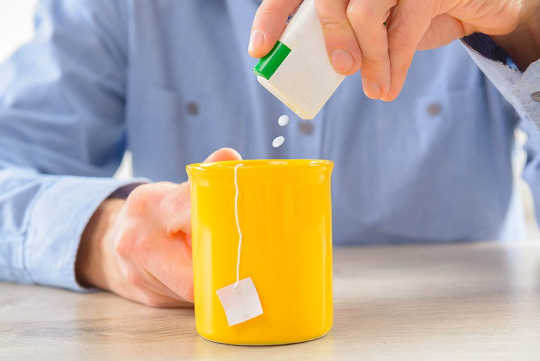
We know we are consuming too much sugar. The latest results from the Australian Bureau of Statistics show 52% of the population are consuming more than is recommended, and this is affecting weight and dental health.
But criticism of sugar is so widespread that sugar in foods such as milk and fruit have also come under fire. We should be mindful it’s really added sugar we need to focus on. Whole foods such as fruit and milk come with many other beneficial components. Fruit also contains vitamins, fibre and various phytochemicals compared to other sources of sugar, such as soft drinks. And the amount of sugar we consume from whole foods is generally lower, since the amount of sugar per serve is lower. In the case of fruit, we are unlikely to eat multiple pieces of fruit in one go when consumed as whole fruit compared to when consumed as fruit juice.
There’s now evidence to show much of the food we eat contains high levels of added sugar. Currently in Australia, there’s no requirement to label foods with the amount of sugar added. This can be tricky for consumers, given “sugar” on the label may appear under many different names. So if added sugar is something to avoid, should we look to alternatives like artificial sweeteners?
Artificial sweeteners - friend or foe?
Artificial sweeteners are food additives, also known as “intense sweeteners”. They have a sweetness level that is many times that of sugar and so can be used in small amounts in food and beverages. In Australia, the use of these food additives is regulated by Australia New Zealand Food Standards Code.
There are a range of intense sweeteners approved for use including acesulfame potassium (Ace K), aspartame, saccharin, sucralose and steviol glycosides. Food additives, including intense sweeteners, undergo a safety review before they’re permitted to be used in foods. This involves assessing whether there are any harmful effects from the additive, and modelling of potential consumption levels.
While artificial sweeteners have been proposed as a strategy for reducing energy intake and preventing weight gain, there is emerging evidence to suggest artificial sweeteners may not be as beneficial as some think.
Evidence for a role in weight gain prevention has been mixed (although conclusions seems to be influenced by the source of funding).
A recent review of 37 trials and cohort studies has shown that over the long term, use of artificial sweeteners may be associated with higher risk of metabolic syndrome (a collection of conditions that increase your risk of diabetes, stroke and heart disease) and type 2 diabetes.
There is also emerging evidence artificial sweeteners may adversely impact the gut microbiota and glucose tolerance. But the existing studies in this area have mainly been conducted in animal models, so further work is required in human trials before recommendations can be made.
A final concern with the use of artificial sweeteners relates to the fact that their use does not necessary help people change their taste preferences for sweetness. Therefore, they may not lead to changes in behaviours or desire for sweet foods and may lead to overconsumption elsewhere.
So it’s clear we need to reduce the consumption of added sugars in our diet. Artificial sweeteners are considered safe for consumption and may be an alternative. While there is emerging evidence around some health issues, we definitely need more robust evidence, particularly in human studies, before ruling them out.
But the best advice is to look at reducing your consumption of foods high in added sugars, which are commonly processed and packaged foods, and focus on dietary patterns rich in core foods such as vegetables, legumes, fruit, wholegrains, lean meat, fish, nuts and dairy foods.
![]() If you keep your intake of added sugar low, and you should only need to use artificial sweeteners occasionally.
If you keep your intake of added sugar low, and you should only need to use artificial sweeteners occasionally.
About The Author
Sarah McNaughton, Associate Professor, Institute for Physical Activity and Nutrition, Deakin University
This article was originally published on The Conversation. Read the original article.
Related Books:
at InnerSelf Market and Amazon























